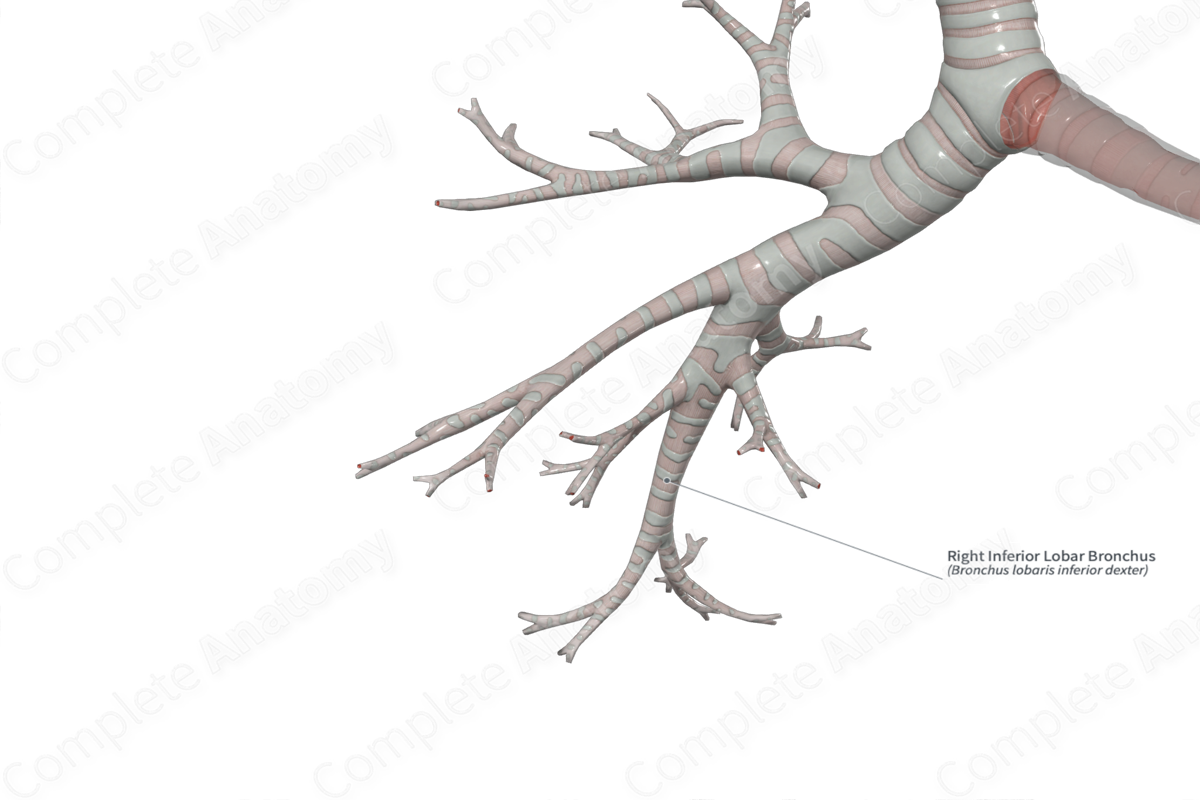
Structure
The right inferior lobar bronchus arises as a continuation of the bronchus intermedius, past the origin of the middle lobar bronchus. The right inferior lobar bronchus passes inferolaterally and slightly posterior to enter the inferior lobe of the right lung. Initially, the right inferior lobar bronchus gives off a large superior segmental bronchus posteriorly. The right inferior lobar bronchus continues inferiorly, giving off several basal segmental branches, including the medial, anterior, lateral, and posterior basal segmental bronchi. These bronchial branches ensure each bronchopulmonary segment of the inferior lobe of the right lung is supplied with an airway.
Key Features/Anatomical Relations
The right inferior lobar bronchus is accompanied by the inferior lobar artery and its continuation as the basal part of the inferior lobar artery. A subsuperior (or subapical) segmental bronchus commonly arises from the right inferior lobar bronchus or the bronchus intermedius, just below the origin of the superior segmental bronchus. This bronchus is distributed between the superior and posterior basal bronchopulmonary segments (Standring, 2016).
References
Standring, S. (2016) Gray's Anatomy: The Anatomical Basis of Clinical Practice. Gray's Anatomy Series 41 edn.: Elsevier Limited.



